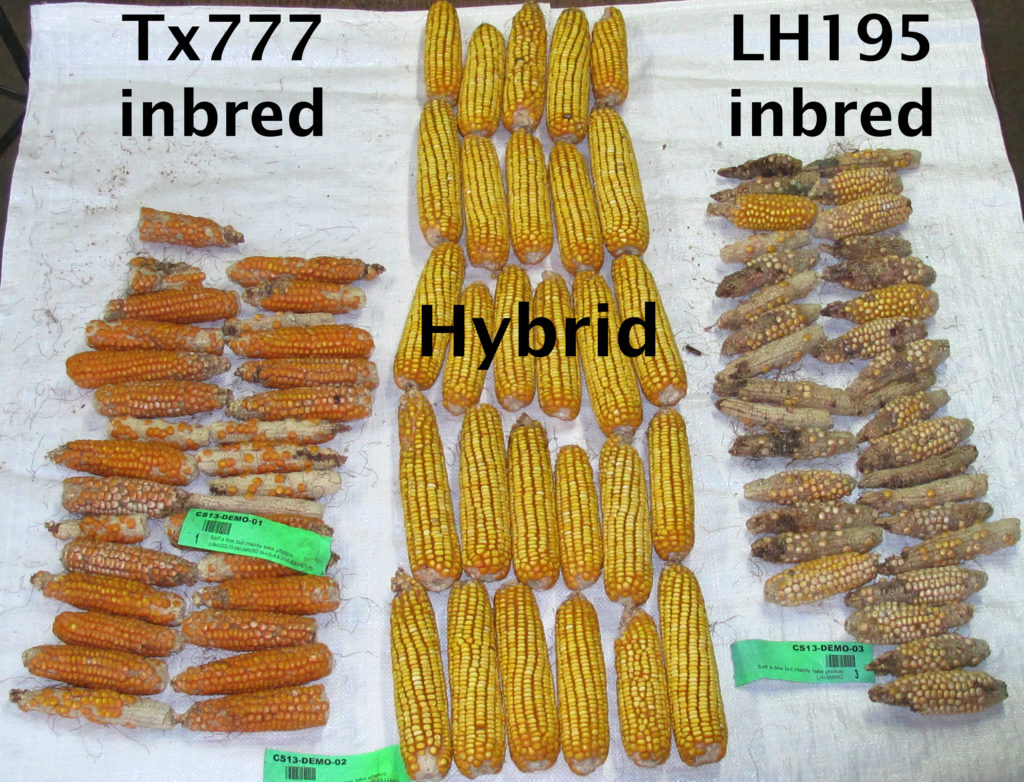Texas A&M releases new corn lines for use in commercial hybrids
Plant varieties address long growing season, stresses of Texas
Writer: Kay Ledbetter, 806-677-5608, [email protected]
Contacts: Dr. Seth Murray, 979-845-3041, [email protected]

COLLEGE STATION – Texas corn producers will have hybrids better suited to the state’s longer growing season and multiple stresses in the future after a Texas A&M AgriLife team from across the state released five new lines bred specifically for that purpose.
“These are the first lines tested, selected and released for commercial corn hybrid production in central and south Texas in over 20 years,” said Dr. Seth Murray, Eugene Butler Endowed Chair at Texas A&M University and Texas A&M AgriLife Research corn breeder in College Station. “They will be foundational to our future inbred and hybrid production and breeding efforts.”

AgriLife Research approved the release of these lines in 2017, which means they have been introduced in commercial hybrids and are looking for commercial partners to make them available at scale to producers.
Murray and other AgriLife Research and Texas A&M AgriLife Extension Service team members discuss the attributes of the five corn inbred lines – Tx741, Tx777, Tx779, Tx780 and Tx782 – in the recently published “Inbred Maize Lines for Yield and Southern United States Stress Adaptation” article in Journal of Plant Registrations, https://tinyurl.com/y6287qp7.
Other current team members are Dr. Wenwei Xu, AgriLife Research corn breeder, Lubbock; Dr. Tom Isakeit, AgriLife Extension Service plant pathologist, College Station; and Dr. Gary Odvody, AgriLife Research plant pathologist, Corpus Christi.
Also a part of this ongoing research project over the past 10 years in the Texas A&M department of soil and crop sciences, College Station, were Dr. Javier Betran, former AgriLife Research corn breeder; and Kerry Mayfield and Jacob Pekar, both research associates.
Helping with the photoperiod-sensitive trials were Dr. Patrick Brown in the department of crop and soil sciences, University of Illinois, and Dr. Aaron Lorenz in the department of agronomy, University of Minnesota.
Corn, also known as maize in world agriculture, has gone through modern commercialization with inbreds, or pure parental lines, and hybrids selected from temperate germplasm insufficiently adapted to Texas and other southern U.S. environments, Murray said.

“These new Texas lines broaden the genetic diversity of U.S. corn,” he said. “They can immediately be used in commercial hybrids and certainly should be useful in breeding new corn lines and hybrids adapted to southern U.S. environment.”
The Texas A&M lines are competitive for yield across the southern U.S. and were selected within Texas stress environments from mostly tropical germplasm previously selected for aflatoxin resistance and have outstanding grain quality.
“We also measured benefits including reduced southern rust, reduced incidence of southern corn leaf blight and lower susceptibility to Lepidopteran insects compared with commercial material currently available,” Murray said.
The lines produce yields comparable to the best commercially available hybrids, he said. The AgriLife Research breeding program crossed with a variety of these commercial testers, and the resulting hybrids were grown at multiple locations over several years.
“Several hybrids from each line produced yields that met or exceeded those of current commercial hybrids,” Murray said. “These lines and their hybrids had additional beneficial traits, including high test weight and reduced susceptibility to diseases such as southern rust and aflatoxin.”
He said using the unique tropical germplasm allowed these inbred lines to be subjected to high day and night temperatures that often cause heat and water stress, and only the best were selected for how they handled those stresses.
However, for these lines to be most useful for seed production, they need to flower early enough in commercial midwestern U.S. seed production areas, Murray said.
Photoperiod sensitivity is one of the major limitations to bringing tropical material into temperate climates, he said. The resulting delay in flowering can cause a number of issues, from seed production to appropriate phenotyping.
“It is quite challenging to separate late-flowering hybrids, which need higher growing degree days, from true photoperiod sensitivity,” he said. “We have almost no ability to select for lines with reduced photoperiod sensitivity in College Station because plants flower
before the summer solstice, making this one of the few environments to do so in the U.S.”
To attempt to quantify this occurrence, the team grew a larger set of lines in Nebraska and Illinois to identify correspondence in flowering times. Of the lines from the breeding program that had been growing in all three environments – Texas, Nebraska and Illinois – only two had flowering times near what is needed.
Although these lines have some unique shortcomings, notably delayed flowering in Midwestern seed production environments and large seed, which could be expensive to produce as female seed parents, these lines will be foundational to future inbred and hybrid production and breeding efforts.
“The Texas Corn Producers Board and U.S. Department of Agriculture’s National Institute of Food and Agriculture have been key supporters of Texas A&M AgriLife to develop these lines and to continue to address the numerous issues Texas corn farmers face,” Murray said.
Seed for Tx741, Tx777, Tx779, Tx780 and Tx782 will be maintained by the Quantitative Genetics and Maize Breeding Program of AgriLife Research at College Station. Seed is available with a Materials Transfer Agreement from the Office of Technology Commercialization, Texas A&M University System, 1700 Research Parkway, Suite 250, College Station, TX 77845-9548.


